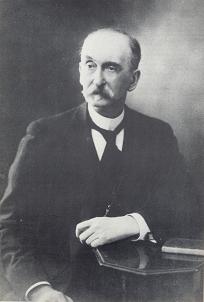Paul Marie Eugène Vieille facts for kids
Quick facts for kids
Paul Marie Eugène Vieille
|
|
|---|---|
 |
|
| Born | 2 September 1854 |
| Died | 14 January 1934 (aged 79) |
| Nationality | French |
| Known for | smokeless gunpowder |
| Awards | Leconte Prize (1889) |
| Scientific career | |
| Fields | chemistry |
Paul Marie Eugène Vieille (born September 2, 1854 – died January 14, 1934) was a brilliant French chemist. He is famous for inventing modern nitrocellulose-based smokeless gunpowder in 1884. This invention changed how weapons worked all over the world. He studied at a well-known school called École Polytechnique.
Contents
Paul Vieille's Big Invention
Paul Vieille's most important invention was a new type of gunpowder. It was made from nitrocellulose. This new powder was called Poudre B. It was a huge step forward from the older black powder.
Why Smokeless Powder Was Better
The new smokeless powder had many advantages.
- It was three times more powerful than black powder. This meant weapons could shoot farther and with more force.
- It left almost no smoke or dirt behind. Black powder created a lot of smoke. This smoke made it hard to see during battles. It also left a lot of residue inside guns.
- Less residue meant guns stayed cleaner. They also worked better for longer.
A New Job for a Great Inventor
Because of his amazing discovery, Paul Vieille became very important. He soon became the director of a special lab in Paris. This lab was called the "Laboratoire Central des Poudres et Salpetres." This is where he had done his research.
How the Invention Changed the World
Paul Vieille's invention was used in many ways. It was not just for small guns. It was also used for all kinds of big artillery. Artillery includes large cannons and other powerful guns. His new powder quickly became popular around the world. Many major military powers started using it.
Awards and Recognition
In 1889, Paul Vieille received a special award. It was called the Prix Leconte. This prize was worth 50,000 French francs. It was given to him to celebrate his amazing discovery. Vieille also became a member of the French Academy of Sciences. This is a group of very smart scientists in France.

